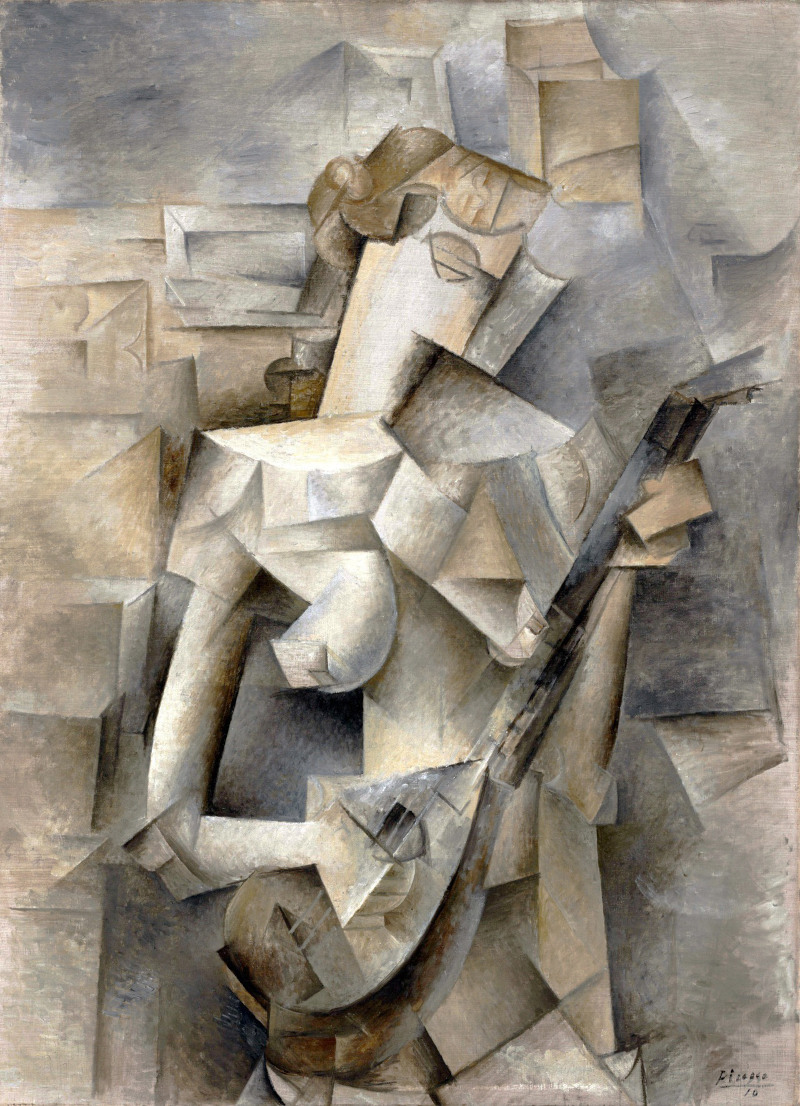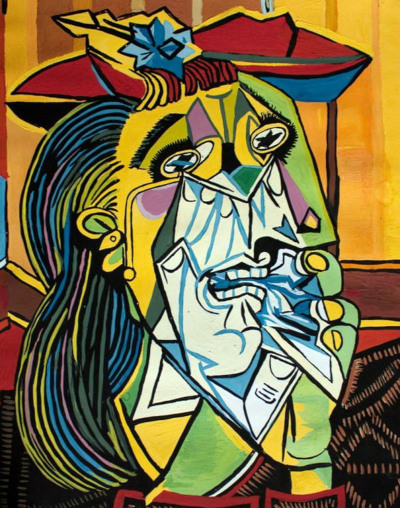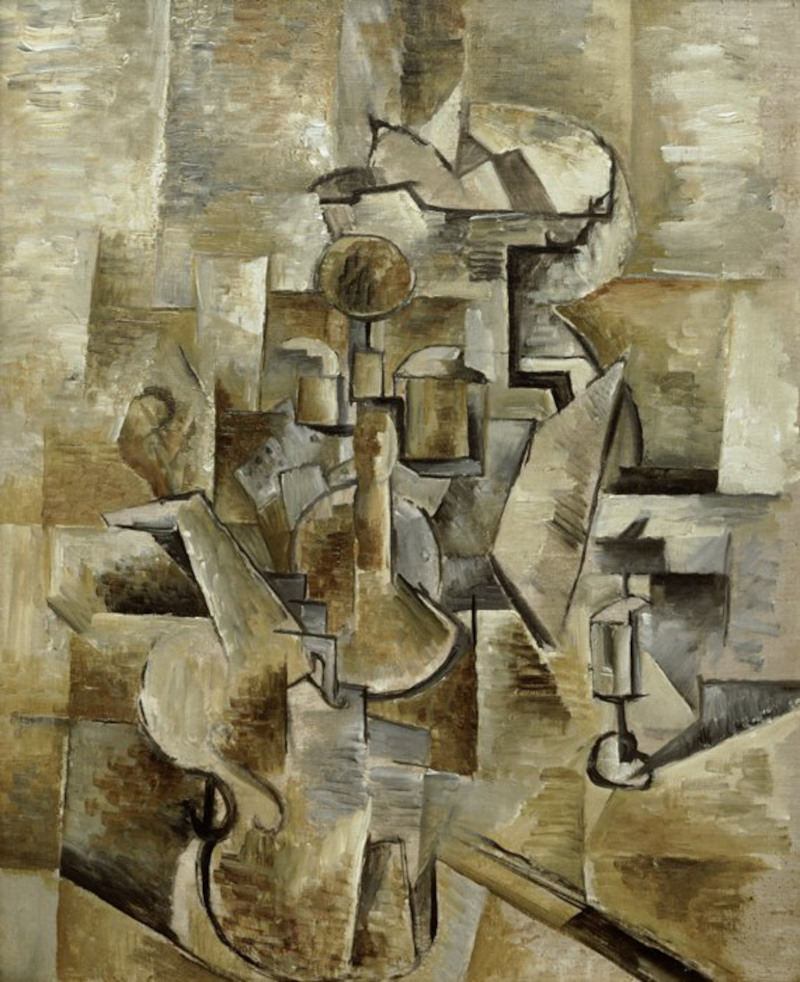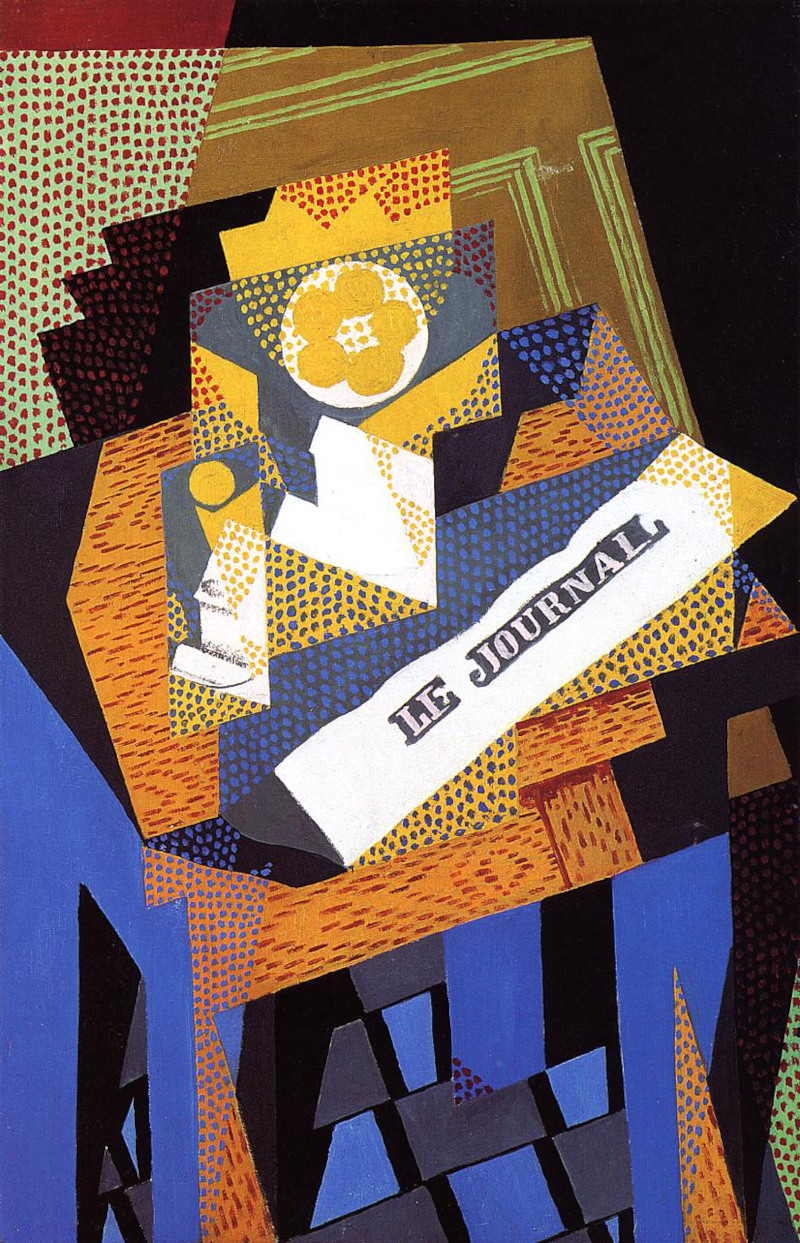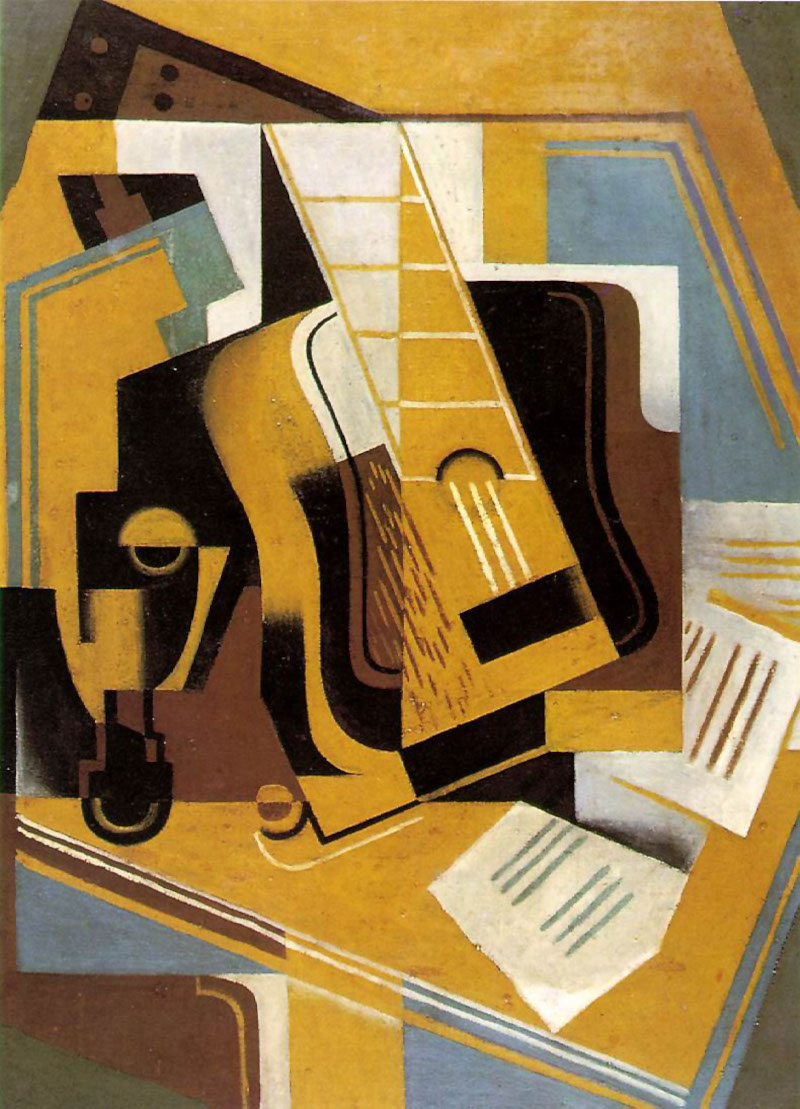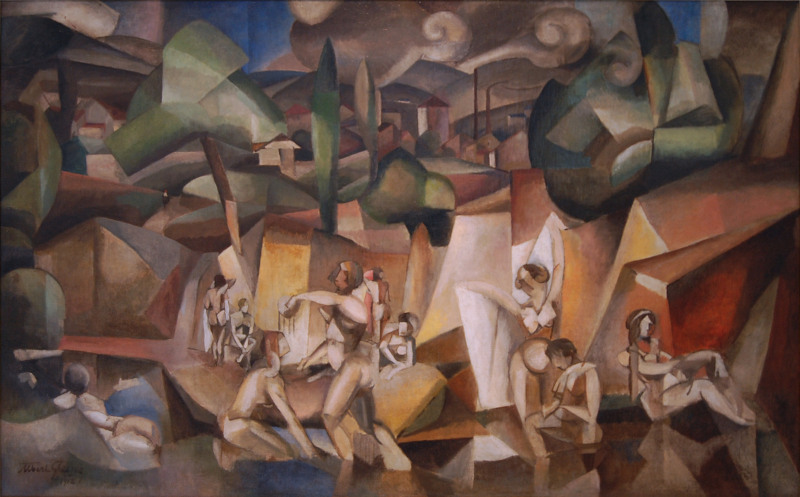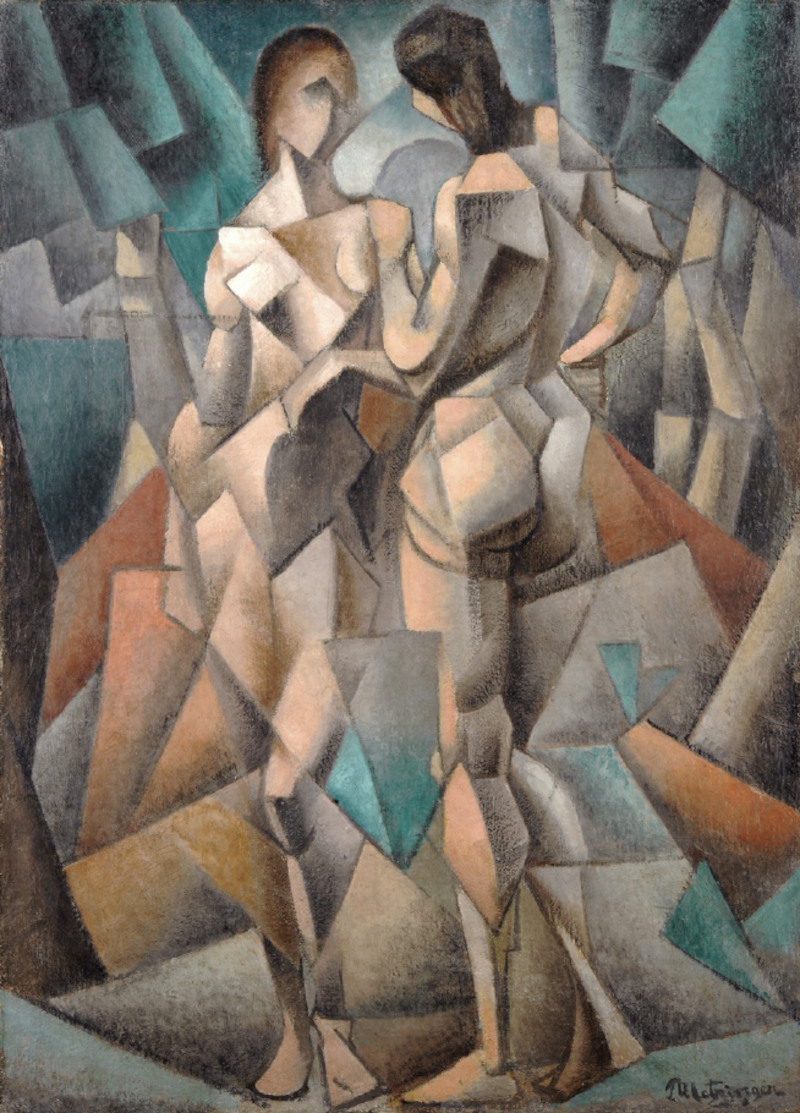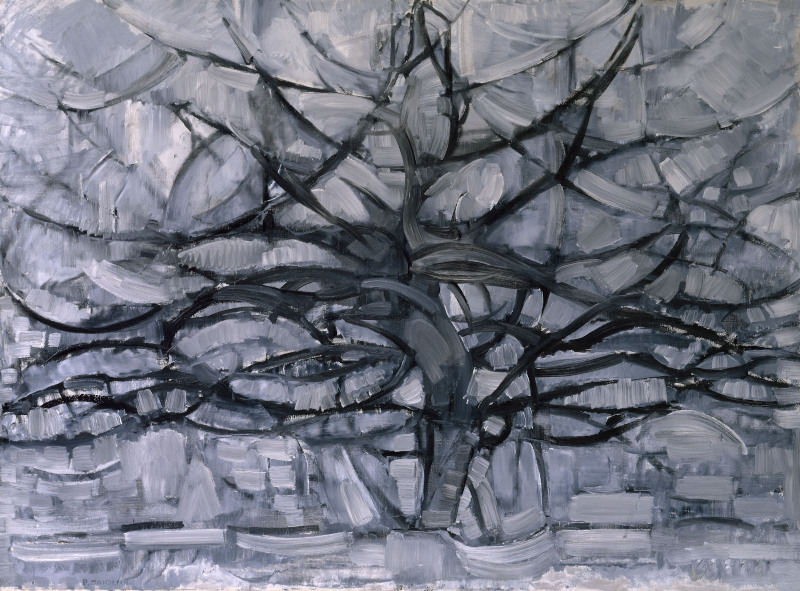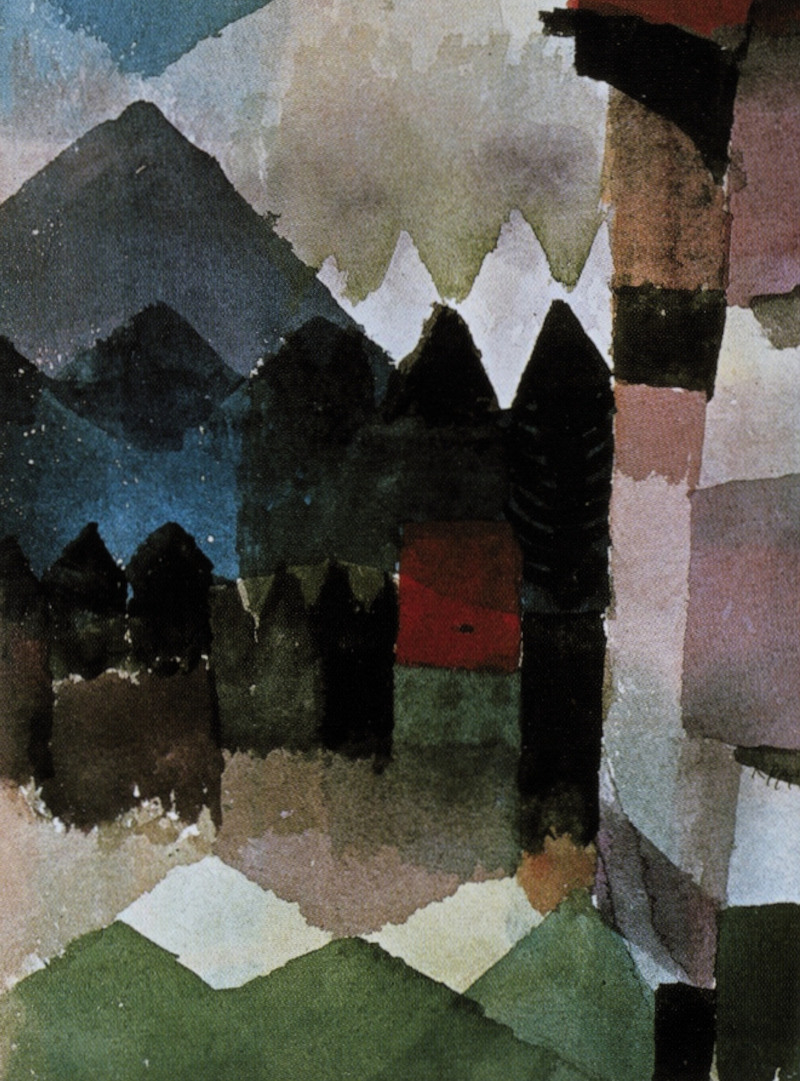Cubism artists helped to shape the direction of European art in the 20th century, here we examine their contributions in detail.
Introduction to Cubism Art
The 19th and 20th century were filled with exciting European art movements, which collectively gifted us some of the finest artists in history. Alongside Impressionist and Expressionist artists, there was also the rise of Cubism, a short-lived, but important movement which challenged traditional art norms.
Cubist art aimed to re-imagine reality, seeing objects from multiple angles and reducing items into fragments that could be re-arranged on the whim of the artist. Many of those who worked in this manner were entirely able to work in a more traditional manner, but simply wanted to move on from the past, and invent new ways of working. Over time, many offshoots and subgenres of the Cubism style would appear, many of which are represented below.
List of Famous Cubism Artists
We have compiled a list below of famous Cubism artists, and provided short biographies on each artist, along with images of some of their most famous paintings. There is also discussion about several themes related to Cubism art, such as an introduction to the movement, and also information on its legacy.
The bright and imaginative work of these painters has helped to establish Cubism art as one of the most popular movements, even after so many exciting styles would appear across the 20th century. Many of the names listed below rank amongst the most famous of any era, and will likely be celebrated for centuries to come.
Pablo Picasso
Pablo Picasso remains the most famous Cubism painter, even though he worked in a vast number of movements and styles across his long and distinguished career. Many elements of Cubism had been influenced by African art, and Picasso had worked in that manner prior to switching to Cubism. His work covered Analytic Cubism and Synthetic Cubism, over the years of 1909-1919, after which he moved onto Neoclassicism and Surrealism.
Picasso tended to work intensively with each style for a period, before feeling that he had exhausted its options and therefore choosing to move on. He pushed Cubism to its extremes, creating busy, complex arrangements of shapes which departed from reality and required considerable study in order to identify different objects within each scene. Picasso arrived at the start of the movement and helped to draw attention to its qualities, as well as other members of the group.
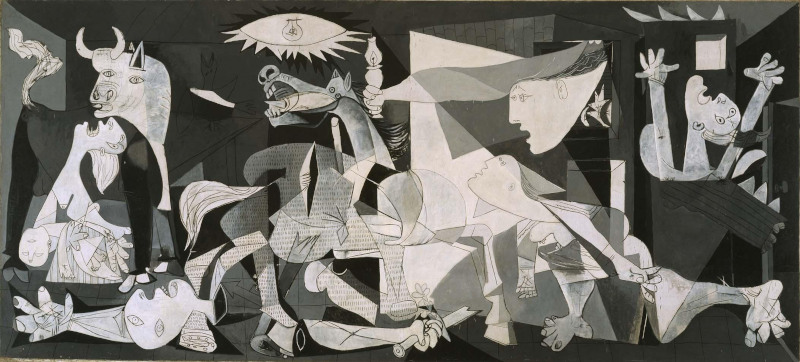 Guernica Anti-War Painting by Pablo Picasso
Guernica Anti-War Painting by Pablo Picasso
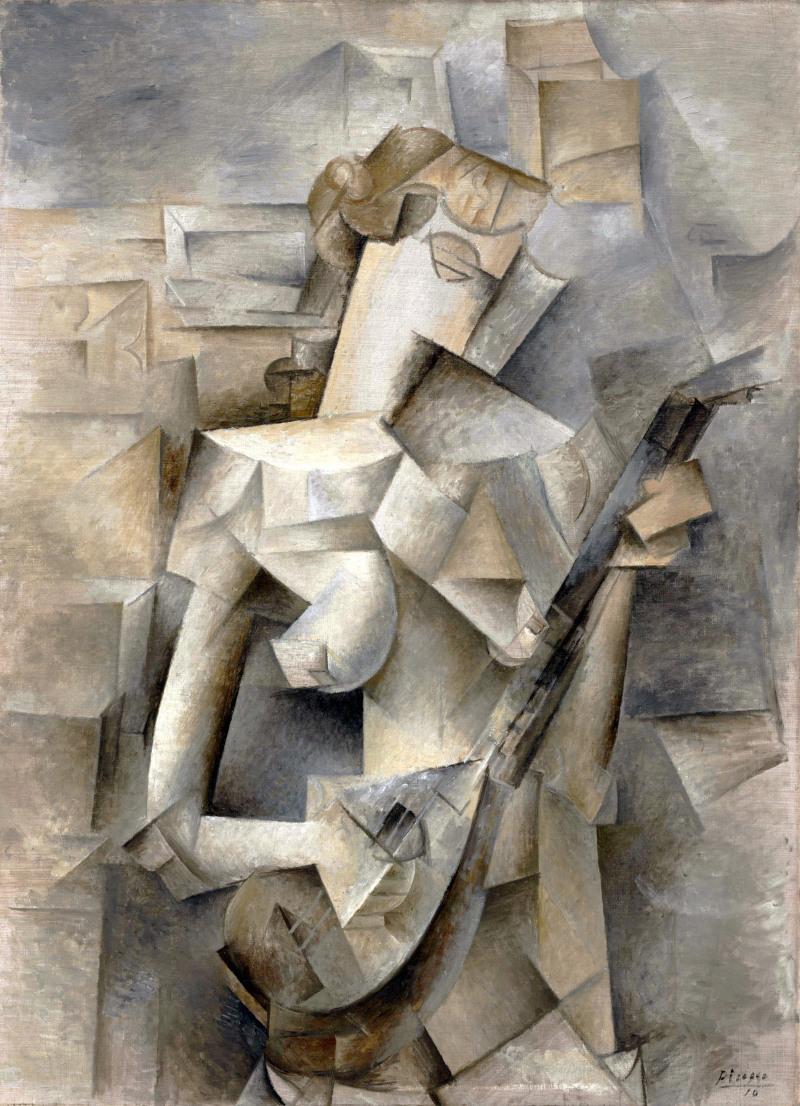 Girl with a Mandolin Figurative Cubist Painting
Girl with a Mandolin Figurative Cubist Painting
Georges Braque
Georges Braque worked closely together with Pablo Picasso in the inception of the Cubist movement, albeit in an entirely informal manner. Braque would expand upon the work of Paul Cezanne, a famous French Post-Impressionist painter who several decades earlier had started to fragment depictions of the French landscape. Additionally, Braque also took on still life content, which was common in Cubism.
Braque and Picasso produced relatively similar Cubist work, choosing dark contrasts in the main, with highly complex arrangements. That said, Braque did sometimes make use of brighter tones in his Cubist landscape paintings, calling upon oranges and light greens to best represent that environment, but normally he would go with browns and greys instead.
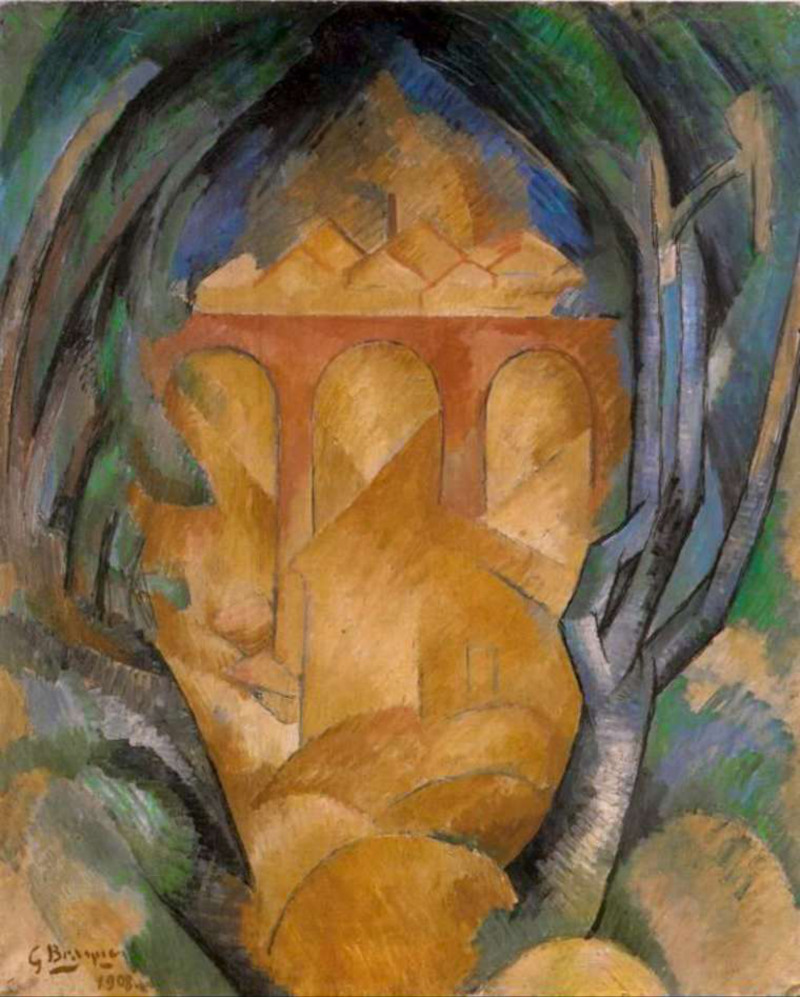 Viaduct at L'Estaque George Braque Landscape Cubism Painting
Viaduct at L'Estaque George Braque Landscape Cubism Painting
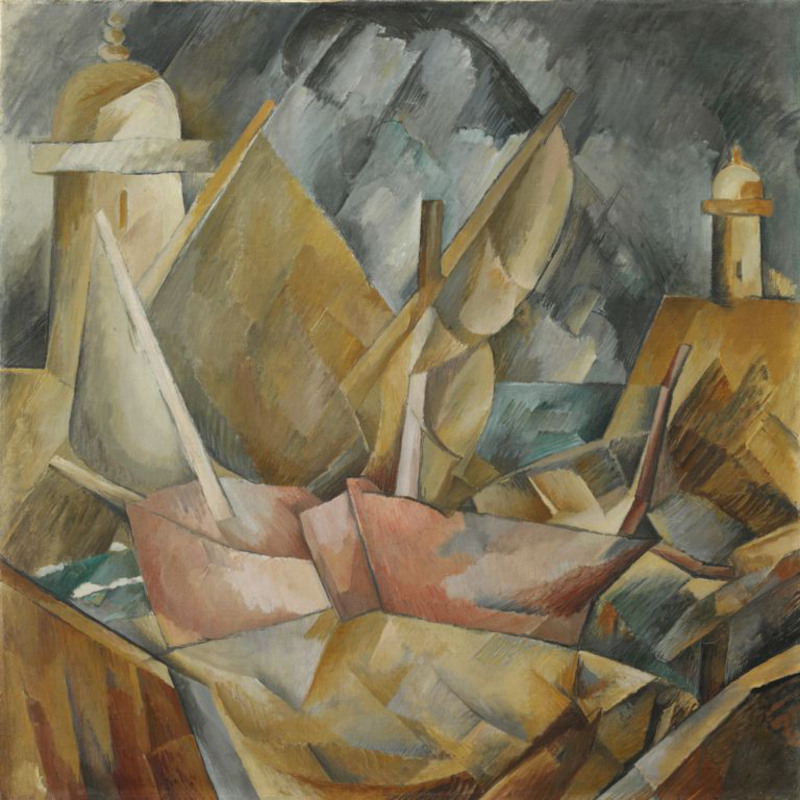 Little Harbor in Normandy, Cubist Painting by Georges Braque
Little Harbor in Normandy, Cubist Painting by Georges Braque
Juan Gris
Juan Gris was another Spanish painter who became involved in Cubist art after moving to France. He worked alongside Picasso and Braque in the early days of the movement, and he took on many of the same themes, though with a brighter palette than his colleagues. There were also a number of Cubism portraits which rank amongst his best work, alongside many still life depictions.
He would make use of all sorts of objects with his paintings, creating fractured interpretations of items such as guitars and other musical instruments, newspapers, a variety of fruit as well as city architecture. He stuck to the Cubist method throughout his career, though passed away aged 40. It is hard to know where his future artistic direction might have headed, had he lived longer.
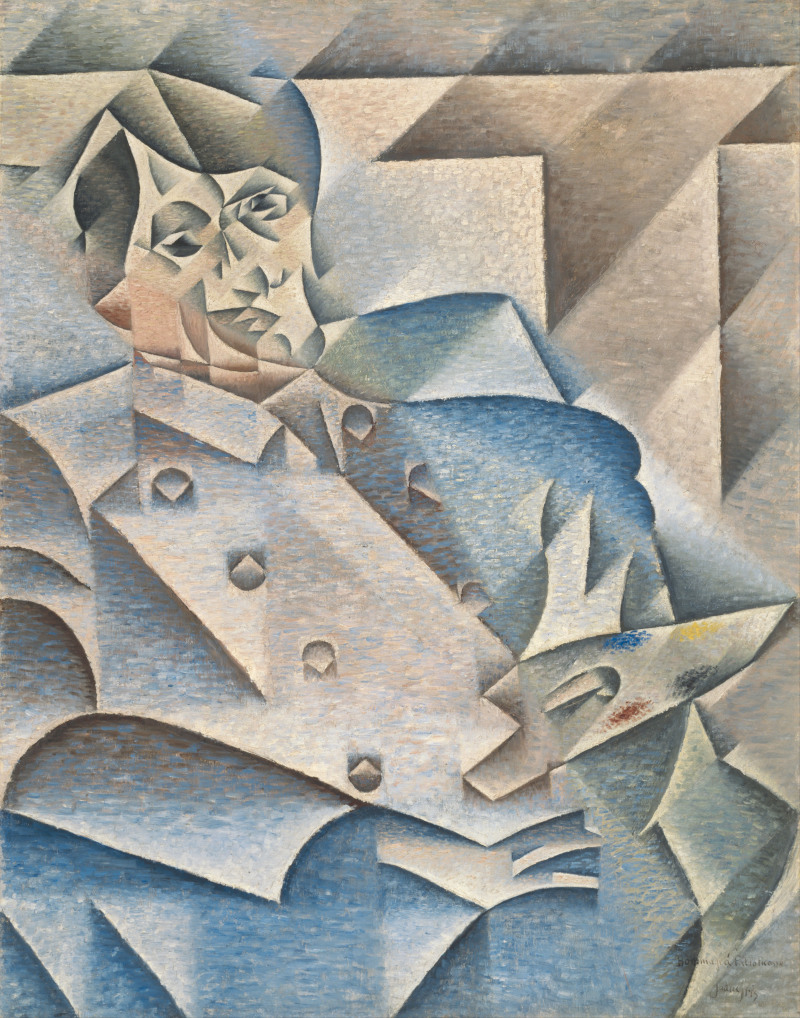 Juan Gris Portrait of Pablo Picasso
Juan Gris Portrait of Pablo Picasso
Fernand Léger
Fernand Léger was a highly significant member of the Cubist movement who contributed his own, unique take on this contemporary approach. Tubism was the term used to describe his own approach, mainly because his paintings were filled with mechanical type tubes, with gradiented color. There was a considerable cross over between Picasso, Braque and Gris, but Leger's take was entirely original and this made his paintings instantly recognisable as from his hand.
His paintings seemed to resemble mass production and mechanization which was sweeping the western world in the early 20th century. The artist lived on into the mid 1950s but remained committed to this style throughout, whilst the likes of Picasso would move on and find new avenues of expression. Leger's best known works included The City, Contrast of Forms and Soldiers Playing Cards.
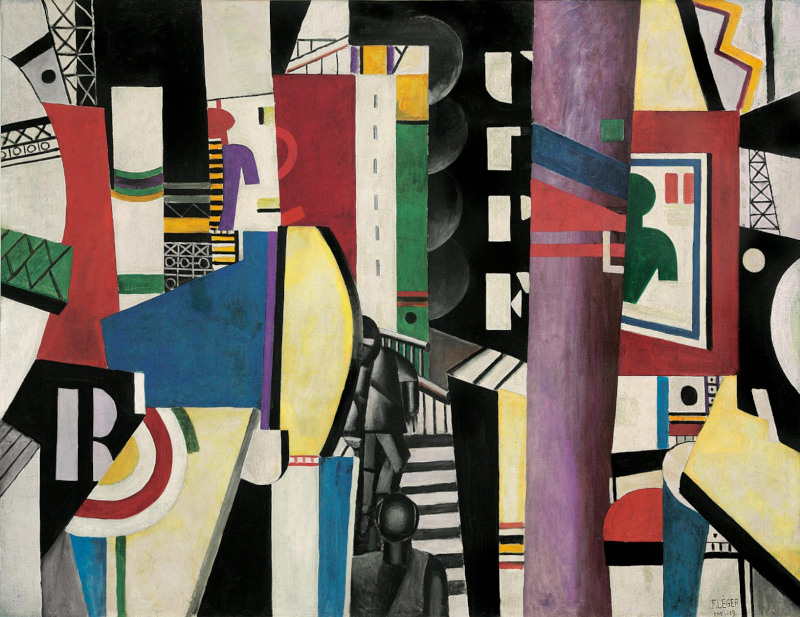 The City Tubism Painting by Fernand Leger
The City Tubism Painting by Fernand Leger
Albert Gleizes
Albert Gleizes was a Cubist painter and theorist, who attempted to summarise the principles of Cubism within a series of publications. He worked closely with Jean Metzinger in that regard, whilst his paintings most closely resembled the work of Picasso and Braque, with darker tones and complex arrangements of fractured forms. There was a number of figurative portraits within his oeuvre, as well as tried and tested Cubist content such as still life and landscapes.
Gleizes worked on bringing a structure of thinking to Cubism, which helped to explain to the public why forms were fractured, and the reasons for these different arrangements. Some of these publications have helped the public to better embrace Cubism art, and also to more easily identify the different objects found in Cubist paintings.
Jean Metzinger
Jean Metzinger was a theorist and painter who helped Gleizes to formulate various artistic philosophies related to Cubism. In the early 20th century Metzinger would embrace alternative contemporary styles including Fauvism, incorporating bright color schemes that shocked and excited in equal measure. After a few years of working in that manner he would help bring about the rise of the Cubist movement, and eventually evolved into Crystal Cubism, which was an offshoot.
The artist always appeared to prefer bright color, but would fit in with the other Cubists by relying on tones of brown and grey before eventually forging his own path. The Cubist era was relatively short, and so many did not evolve far during this time, prefering instead to move on completely and try other contemporary art styles rather than continuing to evolve this movement.
Roger de La Fresnaye
Roger de La Fresnaye was a French Cubist painter who arrived into this art movement when it was already formed. His brighter tones contrast from much of his colleagues' work, and some have suggested a strong influence from fellow French painter, Robert Delaunay. His late arrival into Cubism is part of the reason as to why his reputation would not achieve the same heights as its founders, but his oeuvre is still entirely worthy of note.
There was a large number of figurative paintings found in the career of Roger de La Fresnaye, whilst he also completed a number of still life compositions which was almost a pre-requisite of the overall movement. His paintings in the 1910s came after Cubism had already made significant developments, and so offered perhaps a glimpse over its future direction, such as with a more positive palette that better represented the overall direction of western art at that time.
Ultimately, the Cubist era would draw to a close and new, exciting alternatives would start to appear. Roger de La Fresnaye continues to be regarded as a successful artist who was not as influential as his Cubist colleagues, but nonetheless had something important to offer French art throughout the 1910s. He passed away relatively young, aged 40, and so it is difficult to predict how his art may have evolved in future years.
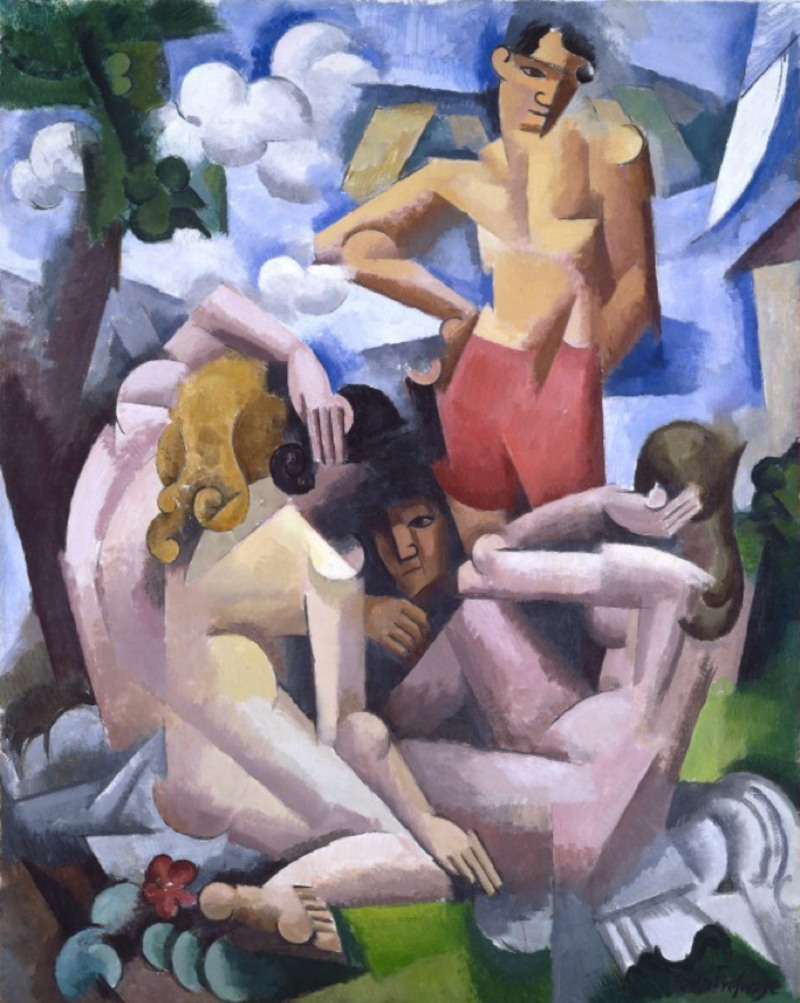 The Bathers Roger de La Fresnaye
The Bathers Roger de La Fresnaye
Jacques Lipchitz
Jacques Lipchitz was a Lithuanian Cubist sculptor who continued to work in this manner even after the movement had started to drift away. The artist was forced to relocate to the US from France due to the threat of German invasion, and he would continue to exhibit his work here, alongside a number of other European artists who had been forced to flee for the same reasons.
Jacques had moved to Paris from Lithuania in 1909, whilst still a young man, and his time in the city would massively impact his artistic style. It was an exciting and innovative time to be in the French capital, with a great community supporting artists from all over the world at the time.
Alexander Archipenko
Alexander Archipenko was a Cubist sculptor born in Kiev, modern-day Ukraine. He relocated to the US in the 1920s, having achieved early success in continental Europe. His style evolved after Cubism started to fall out of fashion, but he worked productively during the initial era, bringing about much of his best work. Figurative, abstract sculptures dominate his oeuvre, and he was also skilled in other disciplines, such as graphical design.
The artist achieved success in France prior to his switch to the US and it would be here that Cubism would start to impact his work. Many East European artists would come to Paris at this time, and help to strengthen the rich art coming out of the city at this time. Political instability would then force many to relocate once more, to the US in coming decades.
André Lhote
André Lhote was a French painter from the turn of the century who combined elements of Fauvism and Cubism in his work. Many of his paintings were brighter in tone than the main leaders of the Cubist movement, for this reason, and his approach proved popular. He later became a respected tutor, helping to bring about the next generation of modern artists as his artistic output dropped.
His landscapes were particularly memorable, often capturing church towers far off in the distance, with river passing across the horizon and green rolling hills. His own take on Cubism felt contemporary and potentially more able to last the test of time, though he remains a fringe figure within early 20th century art circles. French Landscape, 1912 and 14 July, Port de Bordeaux-Poincaré, 1913–14 are amongst his most famous works.
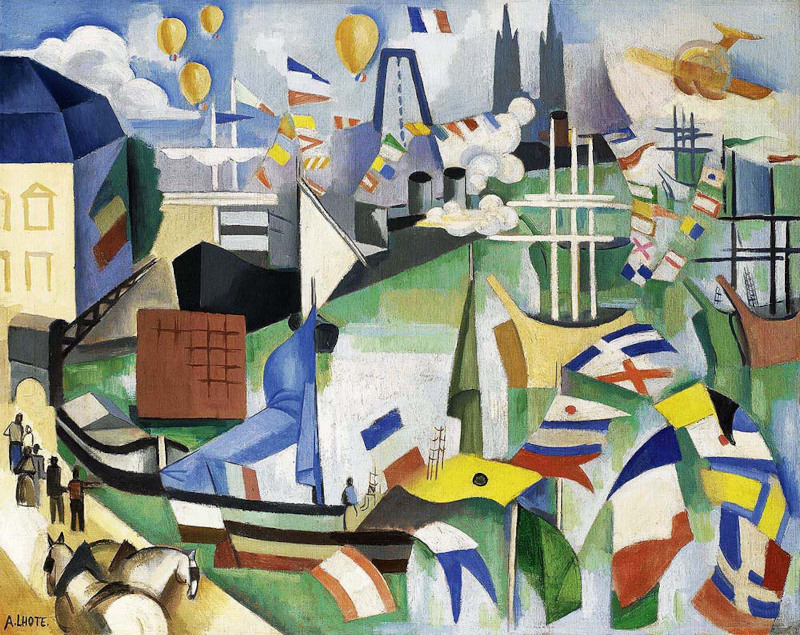 14 July, Port de Bordeaux-Poincare by Andre Lhote
14 July, Port de Bordeaux-Poincare by Andre Lhote
Henri Le Fauconnier
Henri Le Fauconnier was another lesser known, but still highly skilled, member of the Cubist movement. He was born in Hesdin, northern France, but moved to Paris in 1901. Here he would befriend a number of contemporary artists and inevitably started to move in a similar stylistic direction. Although his career last several more decades, it was in the 1910s that he achieved the most success.
The Cubist movement fell away from 1920, and most of its members went with it, other than those who were able to re-invent themselves. Some turned to teaching, others switched in style. Henri Le Fauconnier built a strong reputation for his work during the 1910s, leading to his best known works being exhibited as far afield as Russia and the US.
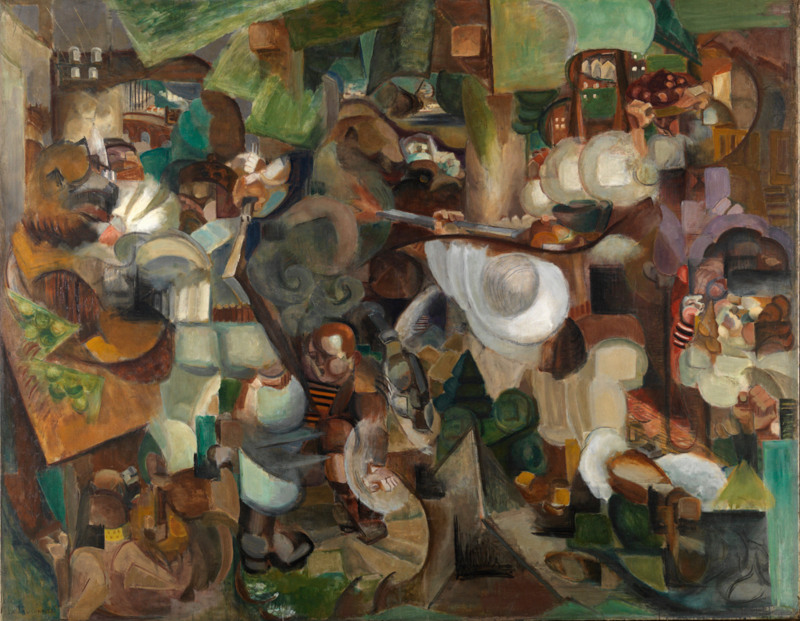 Mountaineers Attacked by Bears by Henri le Fauconnier
Mountaineers Attacked by Bears by Henri le Fauconnier
Lyubov Popova
Lyubov Popova was a Russian artist connected to a variety of artistic movements including Cubo-Futurism, Suprematism, and Constructivism. Eastern Europe would contribute a significant number of artists to these artistic styles, some of whom helped develop the ideas, whilst others moved to France where they would join in with existing groups. Popova initially held a great passion for Renaissance artists, before desiring a more modern approach.
As a rare female Cubist painter, Popova found it necessary to attend the studios of other established artists in order to learn from them and also to become part of the artistic community. Eventually, her own work would start to receive backing, and her career took off. Having initially been interested in the likes of Rublev and Giotto, Popova changed her tastes after moving to Paris in the mid-1910s.
Jacques Villon
Jacques Villon came from the famous Duchamp family, which itself brought about a number of talented, contemporary artists. Villon worked in an abstract manner which demonstrated many characteristics that related to Cubism, and many consider him to have been a Cubist painter. The artist had a long career and attempted to distance himself artistically from his family by working under this alternative name.
He was also connected to the Fauvist movement, which explains why some of his paintings in the 1910s were brighter than typically seen in the Cubism movement. Portraiture was common in his oeuvre, but he took on a variety of cotent across his career, always seeking to innovate and differentiate his work.
List of Famous Artists Related to Cubism
In order to place the Cubist artists within the context of 20th century art, we have added other artists below who either worked in the style themselves, or who helped bring it about in the first place. Whilst they are not considered Cubist artists, because they focused more on other styles, their contributions are still well worthy of inclusion.
Furthermore, some of the Cubist painters and sculptures mentioned previously did not exclusively work in this manner, for its main period lasted only around two decades. There was also a number of related movements which beared similarities to Cubism, but were not precisely the same.
Piet Mondrian
Piet Mondrian worked in an abstract manner in the latter part of his career, having slowly transitioned over time. Some of his paintings could be connected to a Cubist style in the manner in which he reduced form down to a series of fractured planes of color. Mondrian's tree paintings are a good example of this. He would eventually move towards full abstraction, where reality was far removed from his work, and so he could not be considered a Cubist artist.
Mondrian was inspired by the Dutch landscape, and this allowed him to construct depictions of his local environment with very little detail. Seascapes could be produced with just a few colors, and a few brushstrokes. He would eventually turn his attention to city life, and reduce buildings, taxis and roads down to a series of squares and lines in primary colors.
Paul Klee
Paul Klee was a key modern artist related to the Expressionism, Bauhaus, Surrealism who influenced many art movements through his experimental work. Klee loved to express himself through abstract methods and made use of different tools for this purpose, including drawing, oil painting and watercolors. He is believed to have been inspired by the work of Robert Delaunay and Cezanne in their touches of Cubism, but would not directly embrace this movement himself.
Instead, he would make use of the ideas and principles to forge his own path. A number of Paul Klee's watercolors during his Mystical-abstract period in 1914–1919 would create fractures of color and form, which certainly resembled Cubism but were also part of the natural reality of watercolor painting. As was the way of Paul Klee, he would then soon move off into another stylistic direction.
Paul Cezanne
Paul Cezanne was a bridge between 19th and 20th century art, laying the foundations for the Post-Impressionist world. Many of his landscape scenes or rural France were fractured in their formation, in a way that had never been seen before within mainstream European art. Within Cezanne's oeuvre we find the early signs of Cubism forming, with later artists taking his ideas and evolving them onwards.
Cezanne exhibited alongside the Impressionists but his style was always slightly different. He possessed a desire to work independently and over time his approach would diverge even further from the likes of Pissarro, Manet and Monet. His Cubist-esque works then started to appear, and he would leave a body of work that inspired Cubist specialists who followed on in later years.
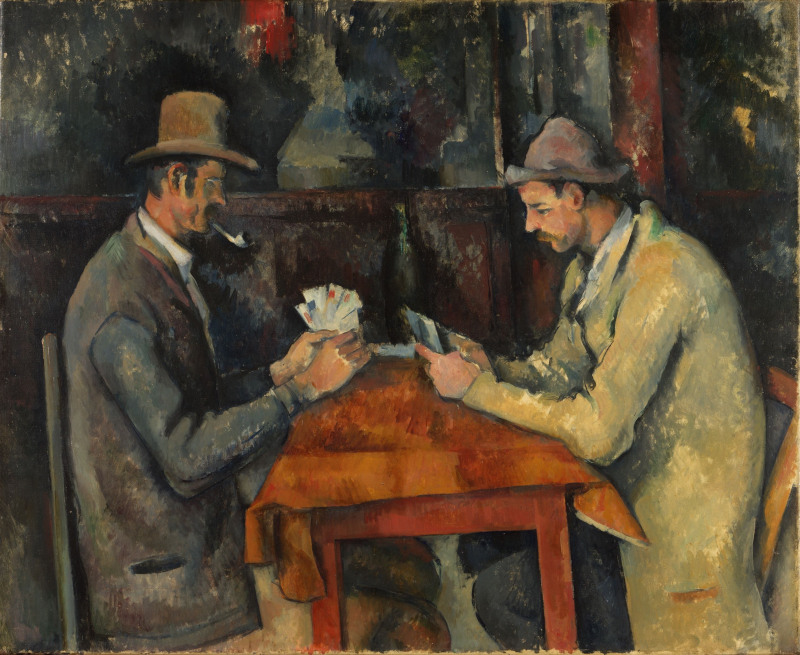 The Card Players by Paul Cezanne
The Card Players by Paul Cezanne
Robert Delaunay
Robert Delaunay was an exciting, varied artist who embraced a number of contemporary art movements at around the turn of the century. He worked in an abstract manner, but touched on many movements including Cubism, Divisionism, and Orphism. Champs de Mars: La Tour rouge is perhaps one example that steps into the realms of Cubism, with angles re-interpreted in a fractal manner.
The late 19th and early 20th century was a fruitful time for French art and Delaunay was very much at the heart of that. His native Paris was a city of artistic innovation at this time, and the artist was perfectly placed to experiment with some of the avant-garde approaches which were appearing within the city at that time. In recognition of this, many artists from elsewhere in Europe would relocate to Paris at around this time.
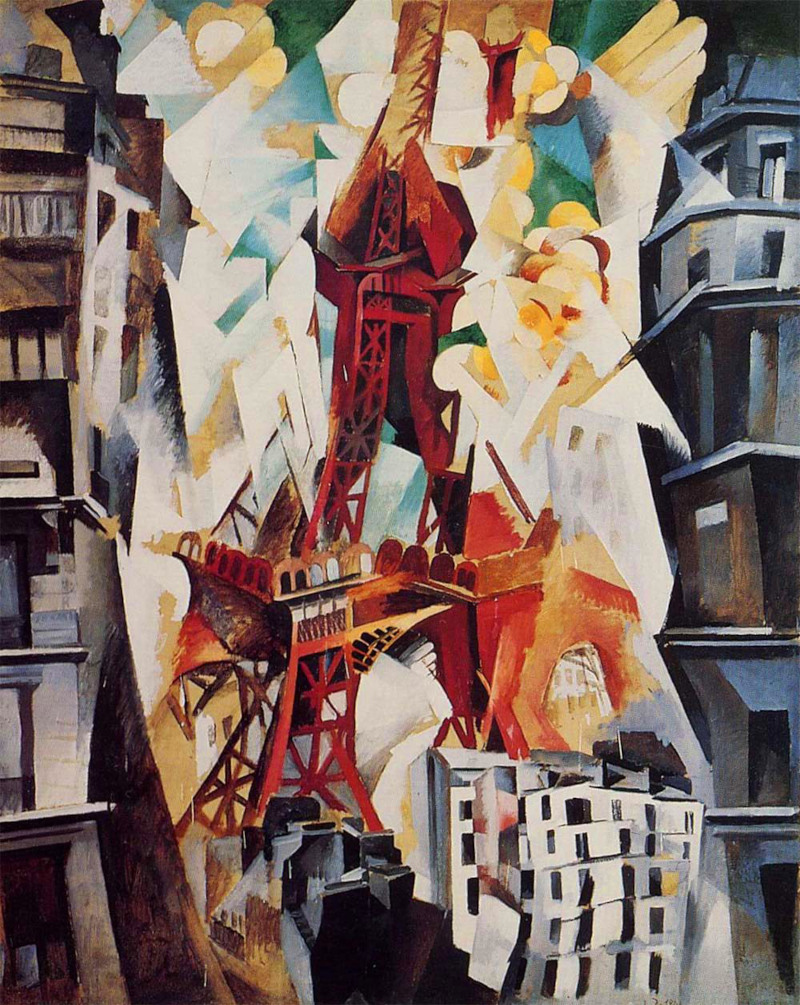 Champs de Mars, La Tour rouge by Robert Delaunay
Champs de Mars, La Tour rouge by Robert Delaunay
Origins and Influences: Tracing the Roots of Cubism
There were several influences within the art world which helped to bring about Cubism. Primitism was inspired by non-European cultures and this approach spread across Europe. Some of its qualities then made their way into Cubism, with many connecting them to African art of previous centuries. There was also the impact of Paul Cezanne, and other Post-Impressionist artists, who connected Impressionism with the later modern art movements.
Photography encouraged artists to think about angles within their work, whilst the influence of Japanese art impacted compositional techniques. There would also be developments in philospphy and societal change, brought about by significant political turmoil, and this always tended to be reflected in the art world. All of these factors combined to encourage the formation of the Cubist movement, with Paris becoming its central hub.
Analytical Cubism: Breaking Down Reality
Analytical Cubism was the creation of Picasso and Braque over the period of 1908-1912. It would become the major Cubist style and encouraged artists to re-invent form by considering objects from different angles, possibly influenced by the rise of European photography. Browns and grays dominated Analytical Cubism paintings, with a subdued, restricted palette deliberately chosen.
Over time, a number of fringe Cubist painters felt too restricted in color, and broke off into other avenues. Some had already experienced working with the bright palettes of the Fauvists, and did not want to give up on these postive, warm tones. Those unfamiliar with Analytical Cubism would initially see chaos, but each composition could be deconstructed and identified with careful observation.
Synthetic Cubism: Reconstructing the World
Synthetic Cubism came about from 1912-1914, as Picasso and Braque moved on from their use of Analytical Cubism. Both would work tirelessly on their art for periods at a time, and so just a few years was enough to produce many paintings in that time. The style of Synthetic Cubism was famed for its use of mixed media, including elements from old newspapers. This approach is still used today, with other art movements, with some artists making use of natural resources such as sand, shells and tree bark.
Some considered this Cubist period to be simpler than in previous years, and there was also the inclusion of a brighter palette, replacing the monochromatic tones of recent years. This seemed to be favored by the public, and so Picasso and Braque continued in this manner until 1914.
Orphic Cubism
Robert Delaunay and Sonia Delaunay spearheaded Orphic Cubism, more commonly known as Orphism. Geometric patterns appeared in many of their paintings, with layers of curves alternating in color. Some even may be reminded of the work of Hilma af Klint, although she was not involved in this movement. It can be said that there was a high level of abstraction within the Orphism movement, with brighter tones bringing popularity with the public.
Many art critics believed that the rise of Orphism could keep Cubism as a whole alive, with the likes of Picasso soon to move off into other directions. By this late stage in the evolution of Cubism, many off-shoots now appeared, particularly within French art.
Tubism
Tubism was the brain child of Fernand Leger and provided a unique body of work which produced a mechanical, industrial look to Cubist art. Leger took the principles of the overall movement but made use of gradiented tubes which provided a metallic look to his objects, whilst bringing volume into each painting. Few others followed his path, but Leger was not concerned by this and enjoyed being seen as a unique contributor.
Leger believed that his approach was clearer to the viewer, and therefore more accessible with the art public. Many of the objects in his scenes could be understood immediately, and whilst his compositions were complex, they were easier to digest for those less familiar with the approach of Cubism art.
Futurist Cubism
Italian artists would bring about Futurist Cubism, having learn much from the earlier work of French artists based in Paris. Their own take on Cubism would come later, and its characteristics included attempting to bring movement and speed into each depiction. Previous forms of Cubism had tended to work with static content, and so this was an exciting and worthwhile diversion.
There was also the use of geometry and mechanised objects, taking elements of Tubism and Orphism into this movement. The artists essentially evolved and merged elements of what had gone before, and applied some of their own innovations and desires on top. Umberto Boccioni lay at the heart of the Futurist Cubism movement, and remains one of the most famous Italian 20th century artists.
Beyond the Canvas: Cubist Sculpture and Architecture
Over time, Cubism would spread beyond painting. A number of famous Cubist sculptors are featured in this article and they worked to produce three dimensional versions of the earlier works of Picasso and Braque. The movement already placed a significant importance on the role of alternating angles, and so sculpture seemed ideally suited to this. Architecture would also embrace sculpture, but most considered it to be too chaotic to form usable buildings and so it was never as prevalent.
Drawing was also an important element of Cubism, with most painters planning their works on paper first. Despite the chaotic nature of the paintings, many put considerable thought into their works, as suggested by the theories that were put forward around how they fractured form.
Cubism's Legacy: Influencing Modern and Contemporary Art
Cubism was a short-lived movement but lives on through its considerable legacy. Many different influences, including African art, photography, sculpture, cultural upheaval and color theories would impact its direction. Over time, the public would warm to its best examples, and a number of its contributors would take some of these ideas into other movements towards the middle of the 20th century.



